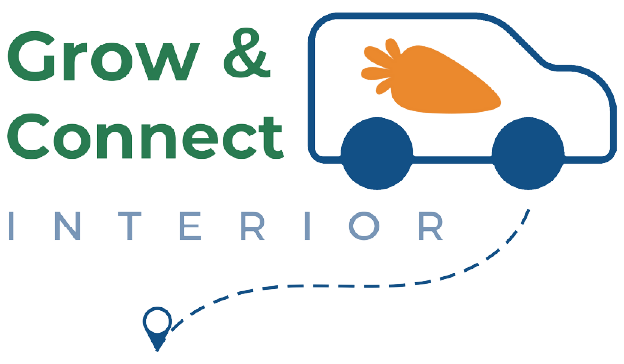
Visualize your place in the food supply chain. Add your organization or business, and gain access to a grassroots, data-driven supply chain management tool, developed in partnership with Canadian educational institutions, economic agencies, and food security organizations.

This is a collaborative space for stakeholders in the local food industry, encompassing producers, retailers, non-profits, and other key players. It offers a platform to work together beyond traditional silos, with minimal barriers.The foodsupplychain.ca platform consolidates real-time, crowdsourced data from members into interactive visualizations, offering a comprehensive view of the food supply chain adaptable to any scale. Designed for versatility, it supports various products, processes, and organizational sizes, providing insights into rural supply chains for effective decision-making. Beneficial for a broad spectrum of stakeholders, including consumers, producers, retailers, and more, its implementation is bolstered by partnerships with food policy councils, economic development agencies, educational institutions, and government bodies.
In rural regions, particularly with local food systems, organizations often encounter obstacles in acquiring and utilizing complex relational data. The conventional methods used for collecting supply chain data are typically tailored to specific industries or professions, characterized by their complexity and lack user-friendly, accessible interfaces.
This lack of a unified platform creates a barrier to effective collaboration and inclusivity among organizations within the food industry. It also makes it difficult to act on data which is missing the grassroots, local granular data which makes up a large portion of food supply chains in rural Canada.
Interactive supply chain modelling systems remove each of those barriers, making advanced decision-making tools a reality for rural Canada. They create a shared space for collaboration across different industries and regions. They also serve as a free tool for individual producers to monitor and manage their supply chains, regardless of scale or industry, all within the context of their community.
What types of organizations should be added?
If you’re involved in the food industry in BC, you’re likely a valuable addition to the model. If you fall into any of these categories, the platform has been created with you in mind.
What are the benefits to your organization?
This project is being developed to meet the needs of stakeholders in the local food and food transportation sectors. The highest priority is to address inefficiencies in our supply chain and local food production. Besides diagnosing inefficiencies, organizations can expect a number of additional benefits:
Who created the food model?
The platform began with a small test region in southern BC in 2021. Planning, design, and early implementation were a fruitful collaborative effort between TruGIS Web & Geospatial Services, and the Lower Columbia Initiatives Corporation. The project has since evolved and grown, responding to feedback and incorporating greater technical sophistication. The BC platform (Grow & Connect Interior) enjoys the support and/or partnership of multiple stakeholders with extensive expertise and experience within the food industry and beyond. These include the University of Guelph, Selkirk College / Selkirk Innovates, Social Sciences and Humanities Research Council of Canada, the Boundary Community Ventures Association, the Kamloops Food Policy Council, and the Central Kootenay Food Policy Council. The list of supporters will continue to grow over the next few years of development.
Can I remove my information?
Yes! Organizations can have their information removed from the food model at any time. As with any other component of the project, meeting the needs and expectations of our local organizations takes priority. If you have any questions or concerns, we will be happy to address them within 24 hours. This can include the removal of supply chain links, organization details, or your presence on the models altogether. Feel free to email, support@trugis.ca for assistance.

GROW AND CONNECT INTERIOR BOLSTERS ACCESS TO LOCAL FOOD ACROSS THE REGION
More local food may be coming to your town. Grow and Connect Interior is a software-based tool that will improve access to local food in Interior British Columbia by forming connections between regional stakeholders.
In rural areas, especially within local food systems, organizations often face challenges in gathering and using important data about their supply chain relationships and networks. Traditional methods of collecting supply chain data are usually designed for specific industries, making them complicated and not very user-friendly.
This lack of a single source for gathering supply chain data creates a barrier to effective collaboration among organizations within the food industry. The limited existing data also lacks information on grassroots and small-scale stakeholders, who make up a large portion of food supply chains in rural Canada.
Grow and Connect is an interactive supply chain modeling system that removes these barriers, creating advanced, collaborative decision-making tools for different industries in rural communities across the Interior.
Grow and Connect (foodsupplychain.ca) also serves as a free tool for individual producers to monitor and manage their supply chains, regardless of scale or industry, all within the context of their community. By consolidating real-time, crowdsourced data from members into interactive visualizations, Grow and Connect offers a comprehensive view of the food supply chain that is adaptable to any scale.
Kevin McHallam, Founder of Kamloops kombucha company KMK Living, says the “supply chain mapping tool [is] instrumental in revolutionizing how businesses like ours can easily connect with specialty retailers and customers, while identifying new delivery options in underserved markets in the BC Interior. These tools facilitate connections and support the growth of sustainable, community-focused food systems.”
The partners behind Grow and Connect want to see more local food in institutions, stores, and restaurants across the Interior—but a lack of transportation options, combined with high and unpredictable costs, makes that hard. We can reduce these costs by using Grow and Connect to bring producers together quickly and conveniently to share the cost of transportation, reach new customers, and get more local food into our communities.
Sarah-Patricia Breen, the Regional Innovation Chair in Rural Economic Development at Selkirk College says, “Through our research we have confirmed distribution and aggregation as a common challenge for food and agricultural businesses across the southern interior. While this challenge may not be unique to food and agriculture, it brings with it an additional set of needs, necessitating sector-specific investigation and expertise, which makes Grow and Connect a timely and exciting opportunity.”
Behind Grow and Connect are five partners: the Kamloops Food Policy Council (KFPC), TruGIS, Selkirk College (Western Kootenay & Boundary Region), Boundary Community Ventures Association (BCVA), and the Central Kootenay Food Policy Council (CKFPC).
These partners have worked to implement three place-based pilots in addition to the Grow and Connect software: the Kootenay Distribution Pilot, the Kamloops Food Policy Council Pilot, and the Boundary Food Hub Pilot.
Kootenay Distribution Pilot: Aims to improve food distribution communication and efficiency between producers, carriers, and retailers in the Kootenay-Boundary region by creating accessible and transparent data.
Kamloops Food Policy Council Pilot: Focuses on e-commerce aggregation for the Kamloops region using Open Food Network Canada (OFN), empowering local producers to sell online independently or through other vendors.
Boundary Food Hub Pilot: Increases storage and distribution capacity of the Boundary Food Hub by expanding their meat processing facility, adding a third reefer trailer customized for carcass transport, and enhancing shared freezer capacity.
This project is funded under the Sustainable Canadian Agricultural Partnership, a federal-provincial-territorial initiative, and is delivered by the Investment Agriculture Foundation of BC.
Grow and Connect Interior has also received funding from the Economic Trust of the Southern Interior, the CN Rail Community Fund, and has drawn on research funded by the Social Sciences and Humanities Research Council of Canada, and the Regional District of Central Kootenay.